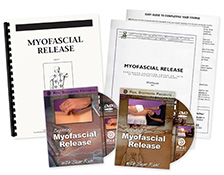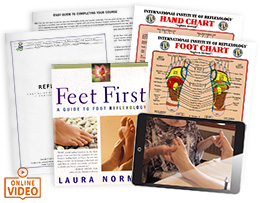Approximately 17 million people in the United States currently have diabetes, and the number is growing. Odds are that most massage therapists either have a diabetic client, or will treat one soon. Diabetes is a complex disease, occurring when the body is unable to maintain the proper levels of blood sugar, or glucose, due to an inability to produce or properly use insulin. Studies have demonstrated the place bodywork has in diabetes maintenance, and an increasing number of sufferers are recognizing the value various alternative therapies can have on their health.
Below are three reasons massage therapy is beneficial to diabetics:
- Relaxation – Duke Medical University researchers have confirmed that stress management can lower blood glucose levels. A Touch Research Institute study demonstrated that massage therapy lowers blood glucose levels in children with Diabetes Mellitus. A study at New Mexico University showed that a short stress-relief program including touch could lower blood sugar and improve health in diabetic patients.
When the body encounters stress, it prepares itself for a “fight or flight” reaction by raising blood glucose levels. Since raised blood glucose levels are detrimental to diabetics, methods of reducing stress, such as massage therapy, can have a profound effect on preventing blood sugar surges.
- Circulation – There is no getting around the fact that massage can increase circulation, thereby encouraging the efficient transport of oxygen and nutrients throughout the body. Improved circulation, in turn, improves the cells’ insulin uptake.
- Tissue Flexibility – A history of high blood sugar thickens connective tissue. Massage helps increase tissue mobility and elasticity, reversing the thickening effect of uncontrolled glucose levels. This tissue inflexibility can manifest as stiffness in muscles, tendons and ligaments, as well as decreased range of motion in the joints. Massage therapy can significantly counter this effect. Additional factors to encourage flexibility and support the myofascial system’s health include range of motion techniques, stretching and the inclusion of a regular exercise program.
While massage therapy presents many benefits to people with diabetes, there are some important safety measures requiring a caregiver’s attention.
Injection sites
Individuals with Type 1 diabetes typically must self-inject insulin to maintain insulin homeostasis. The increased circulation as a result of massage near the injection area can increase insulin absorption rates. Any increase in the bioavailability of insulin as a result of massage could have drastic consequences for a diabetic so a massage therapist must be sure to avoid the location of any recent injection sites. Prior to working with a diabetic, it is important to ask if and where they inject insulin, to prevent mistakenly working on such an area.
Neuropathy
Neuropathy is a common complication of diabetes, causing dulled or painful sensations on the extremities. As a result, a diabetic may be unable to provide adequate feedback regarding appropriate measures of tactile sensation or heat. Diabetic neuropathy can be extremely painful, requiring a sensitive technique, such as energy work, on affected areas.
Additionally, the chance of bruising, burning or any injury is increased with diabetic clients due to their delicate and easily damageable tissue. Instead of petrissage, deep effleurage or friction, which could potentially further damage delicate skin, the broad, direct pressure of Reflexology or the acupressure techniques of Shiatsu Anma Therapy are safer alternatives. When using any kind of heat therapy on diabetic clients, repeatedly check temperature settings, relying on your own sensitivity to temperature, not the clients’, to prevent burning.
Blood Sugar Changes
Primarily to confirm adequately controlled blood sugar, a diabetic must receive physician permission before receiving massage. Even with physician permission, wild fluctuation in blood sugar can occur. Because massage can lower blood sugar, both the client and practitioner must be armed to monitor any sudden changes. Due to the relaxing nature of massage, and the somewhat altered state of consciousness that can occur, a drop in blood sugar can be difficult to notice. Some diabetics can tell when their sugar levels are dropping, while others may not have any awareness. Hypoglycemia (low blood sugar) is a serious condition and can lead to unconsciousness and, rarely, death.
Due to the frequent unpredictability of a diabetic’s blood sugar fluctuation, it is important for the massage therapist to recognize the signs and symptoms of hypoglycemia. Any one or more of these symptoms may occur:
- Excessive sweating or clamminess
- Faintness or headache
- Inability to awaken
- Slowed or incoherent speech
- Slowed or delayed movements
- Sudden irritability
- Change in personality
- Rapid heartbeat
If the massage therapist notices any hypoglycemic symptoms, they must ask the client how they feel. A confirmation of a blood sugar reaction or a response that seems “off” requires immediate attention. A blood sugar drop can occur very quickly in diabetes, and is easily addressed with the administration of sugar. Make sure you have sugar available, either in the form of fruit juice, cookies, glucose tablets or some other sweet. Many diabetics carry sugar pills with them for such an event. The diabetic will typically experience an increase in blood sugar within minutes. Be certain that your client is feeling better befoe they get off of the table and again prior to their departure. It may be necessary to eat more sugar or test their blood glucose level to make certain of their safety.
Value Outweighs Risks
Massage can be a wonderful complement to diabetes management. Those affected will appreciate your understanding of their condition, willingness and compassion to avoid exacerbating damaged tissue and preparedness in handling a low blood sugar reaction.
Researching possible diabetes complications and any corresponding massage technique adjustments will further benefit clients suffering from this extremely common metabolic disease. It is critical to maintain open communication with your clients, instituting the exchange of client feedback and the awareness of possible hypoglycemia. Awareness of diabetes’s precautions will facilitate the safe enjoyment of massage by your affected clients.














